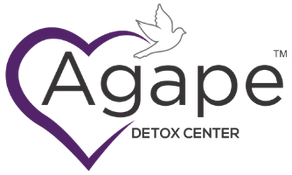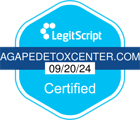Hydrocodone is a prescription opioid used to treat moderate to severe pain. It is commonly combined with acetaminophen or ibuprofen to enhance its pain-relieving effects. Hydrocodone works by binding to opioid receptors in the brain and spinal cord, altering the perception of pain. This medication is available in both immediate-release and extended-release formulations, allowing for different dosing schedules depending on the severity of pain.
Hydrocodone is typically prescribed for post-surgical pain, injury-related pain, and chronic conditions like arthritis or back pain. Since it is a controlled substance, its use is closely monitored to prevent misuse and addiction. Patients are often advised to take hydrocodone only as prescribed to minimize the risk of dependency.
Table of Contents
ToggleWhat Is Oxycodone? Uses and Overview
Oxycodone is another potent opioid analgesic used to manage moderate to severe pain. It is available in both standalone formulations and in combination with non-opioid pain relievers like acetaminophen. Similar to hydrocodone, oxycodone affects opioid receptors in the brain to relieve pain sensations.
Doctors often prescribe oxycodone for post-operative pain, injury recovery, and chronic pain conditions such as cancer-related pain. It is available in immediate-release (IR) and extended-release (ER) forms, allowing tailored pain management depending on patient needs. Oxycodone is known for its strong analgesic properties and is often preferred when a more potent pain reliever is necessary.
Key Similarities Between Hydrocodone and Oxycodone
Hydrocodone and oxycodone share many similarities, as both are potent opioid medications commonly prescribed for the management of moderate to severe pain. These drugs function by binding to opioid receptors in the brain and spinal cord, altering pain perception and providing significant relief to individuals suffering from acute or chronic conditions. Both hydrocodone and oxycodone are available in immediate-release and extended-release formulations, allowing healthcare providers to tailor treatment based on a patient’s specific needs and pain levels.
In many cases, hydrocodone and oxycodone are combined with non-opioid pain relievers, such as acetaminophen or ibuprofen, to enhance their analgesic effects. This combination can provide more effective pain relief while potentially reducing the required opioid dosage, thereby minimizing some risks associated with opioid use. However, despite their effectiveness, both medications carry a high potential for addiction and dependence, especially when misused. The risk of dependency increases with prolonged use, higher dosages, or recreational consumption.
As opioid medications, hydrocodone and oxycodone share common side effects, including drowsiness, dizziness, nausea, and constipation. Patients taking these drugs must be closely monitored to mitigate adverse effects and reduce the risk of developing a substance use disorder. Additionally, both hydrocodone and oxycodone are classified as Schedule II controlled substances in the United States due to their high potential for abuse. This classification means that prescriptions are closely regulated, and medical professionals must evaluate patients carefully before prescribing them. Given their similarities in function, efficacy, and risks, patients must follow their healthcare provider’s guidance closely to ensure safe and effective pain management while minimizing the likelihood of misuse or addiction.
Differences in Potency: Hydrocodone vs. Oxycodone
While both medications are effective pain relievers, oxycodone is generally considered more potent than hydrocodone. Studies suggest that oxycodone provides stronger pain relief per milligram compared to hydrocodone, which is why it is often prescribed for more severe pain conditions. However, this increased potency also comes with a higher risk of dependence and abuse.
In clinical settings, oxycodone is often reserved for cases where hydrocodone is not providing adequate pain relief. Patients who switch from hydrocodone to oxycodone often require careful monitoring to prevent unintended overdose or severe side effects due to increased potency.
Medical Applications: When Are They Prescribed?
Doctors prescribe hydrocodone and oxycodone based on the patient’s pain severity and medical history.
Hydrocodone is commonly prescribed for:
- Short-term pain management after surgery or injury
- Chronic pain conditions like arthritis or lower back pain
- Cough suppression in combination medications
Oxycodone, being more potent, is often used for:
- Post-surgical pain that requires stronger analgesia
- Cancer-related pain management
- Severe chronic pain conditions are unresponsive to milder opioids
- Cases where patients develop tolerance to weaker opioids
Side Effects of Hydrocodone and Oxycodone
Common Side Effects:
- Drowsiness
- Dizziness
- Nausea and vomiting
- Constipation
- Dry mouth
Serious Side Effects:
- Respiratory depression
- Low blood pressure
- Confusion or hallucinations
- Increased risk of addiction
- Liver damage (if combined with acetaminophen)
- Increased risk of falls or accidents due to sedation
Hydrocodone vs. Oxycodone: Risk of Dependency
Both drugs carry a significant risk of dependency due to their opioid nature. Long-term use can lead to tolerance, requiring higher doses to achieve the same pain relief. Misuse or prolonged use can result in physical and psychological dependence, making it difficult to stop without medical intervention.
The risk of dependency increases when these medications are taken outside of prescribed guidelines, crushed, snorted, or injected. This can result in a rapid onset of effects, increasing the likelihood of addiction.
Withdrawal Symptoms: Comparing the Experience
Withdrawal from hydrocodone and oxycodone can be intense and uncomfortable. Symptoms include:
- Muscle aches
- Sweating
- Anxiety and irritability
- Nausea and vomiting
- Insomnia
- Diarrhea
- Rapid heart rate and high blood pressure
Oxycodone withdrawal is often reported to be more severe due to its higher potency. Medically supervised detox is recommended for both drugs to manage withdrawal symptoms safely. Treatment options such as medication-assisted therapy (MAT) can help ease the withdrawal process.
Overdose Risks: Hydrocodone vs. Oxycodone
Overdosing on either hydrocodone or oxycodone can be life-threatening, with severe consequences that can quickly escalate if not addressed immediately. One of the most critical dangers of opioid overdose is severe respiratory depression, where breathing slows down drastically or stops altogether, depriving the brain and other vital organs of oxygen. This can lead to loss of consciousness, brain damage, or even death if medical intervention is not provided in time. Other symptoms of overdose include cold, clammy skin, pinpoint pupils, slow or irregular heartbeat, and extreme drowsiness that progresses to an unresponsive state or coma.
Due to the potency of these opioids, even a small increase in dosage—whether accidental or intentional—can lead to overdose. The risk is particularly high for individuals who take these medications without a prescription, those who mix them with alcohol or other central nervous system depressants like benzodiazepines, or patients with a low tolerance due to a lapse in opioid use. Additionally, extended-release formulations of these drugs can be especially dangerous when misused, as crushing or chewing them can result in a rapid release of a high dose, overwhelming the body’s ability to metabolize the drug safely.
Fortunately, opioid overdoses can often be reversed if treated promptly with naloxone (Narcan), an opioid antagonist that can rapidly restore normal breathing. Naloxone is available in nasal spray and injectable forms and is increasingly being distributed to first responders, medical professionals, and even family members of at-risk individuals. If an overdose is suspected, it is crucial to administer naloxone immediately and call emergency medical services for further treatment.
Preventative measures are essential in reducing the likelihood of opioid overdose. Physicians and pharmacists play a critical role by closely monitoring prescriptions and educating patients on proper medication use. The implementation of prescription monitoring programs (PMPs) helps track opioid prescriptions and prevent doctor shopping, a common practice among individuals struggling with opioid addiction. Additionally, patients should store their medications securely and dispose of any unused opioids properly to prevent unauthorized access or misuse.
For individuals who have a history of substance use disorder or who are prescribed opioids for chronic pain, alternative pain management strategies such as physical therapy, cognitive behavioral therapy, or non-opioid medications may be beneficial in reducing reliance on opioids and minimizing overdose risks. Education and awareness about opioid safety, early intervention for substance misuse, and accessible addiction treatment options all play a vital role in combating the opioid overdose crisis.
Mixing Hydrocodone or Oxycodone with Alcohol or Other Substances
Mixing these opioids with alcohol or other central nervous system depressants (such as benzodiazepines) significantly increases the risk of:
- Respiratory depression
- Sedation and unconsciousness
- Fatal overdose
Patients should always follow their doctor’s instructions and avoid consuming alcohol while taking these medications. Combining opioids with illicit substances or other prescription medications without guidance from a healthcare provider can be extremely dangerous.
Signs of Abuse and Misuse
Recognizing opioid misuse early can help prevent addiction. Warning signs include:
- Taking more than the prescribed dose
- Seeking multiple prescriptions from different doctors (doctor shopping)
- Crushing or snorting pills for faster effects
- Changes in behavior, such as secrecy or withdrawal from loved ones
- Increased tolerance and dependence
- Financial problems related to obtaining the drug
Treatment Options for Hydrocodone and Oxycodone Addiction at Agape Detox

For those struggling with addiction to hydrocodone or oxycodone, Agape Detox offers comprehensive treatment programs, including:
- Medically supervised detox: Ensures safe withdrawal management.
- Inpatient rehabilitation: Provides structured care and therapy.
- Behavioral therapies: Cognitive-behavioral therapy (CBT) and counseling to address addiction.
- Medication-assisted treatment (MAT): Uses medications like buprenorphine or methadone to ease withdrawal symptoms and cravings.
- Aftercare programs: Long-term support to prevent relapse.
If you or a loved one is struggling with opioid addiction, seeking professional help is essential. Agape Detox provides a safe and supportive environment for recovery, helping individuals regain control of their lives. The sooner treatment begins, the better the chances of achieving long-term sobriety. Contact Agape Detox today!

Stephanie Robilio is an accomplished Clinical Director at Agape Behavioral Healthcare. With a Master of Social Work degree, LCSW license, and extensive training in Rapid Resolution Therapy under her belt, she brings a wealth of expertise to her role. Her unique combination of education and experience allows her to provide exceptional care to clients and lead her team with confidence. Stephanie’s joy comes from witnessing the moments when her patients creatively connect the dots and bravely move toward reclaiming their power. Her purpose is to help individuals understand their past so they can create a future full of hope, growth, and success. Stephanie attributes a large portion of her success to the supportive culture and strong sense of community fostered by the Agape team.





